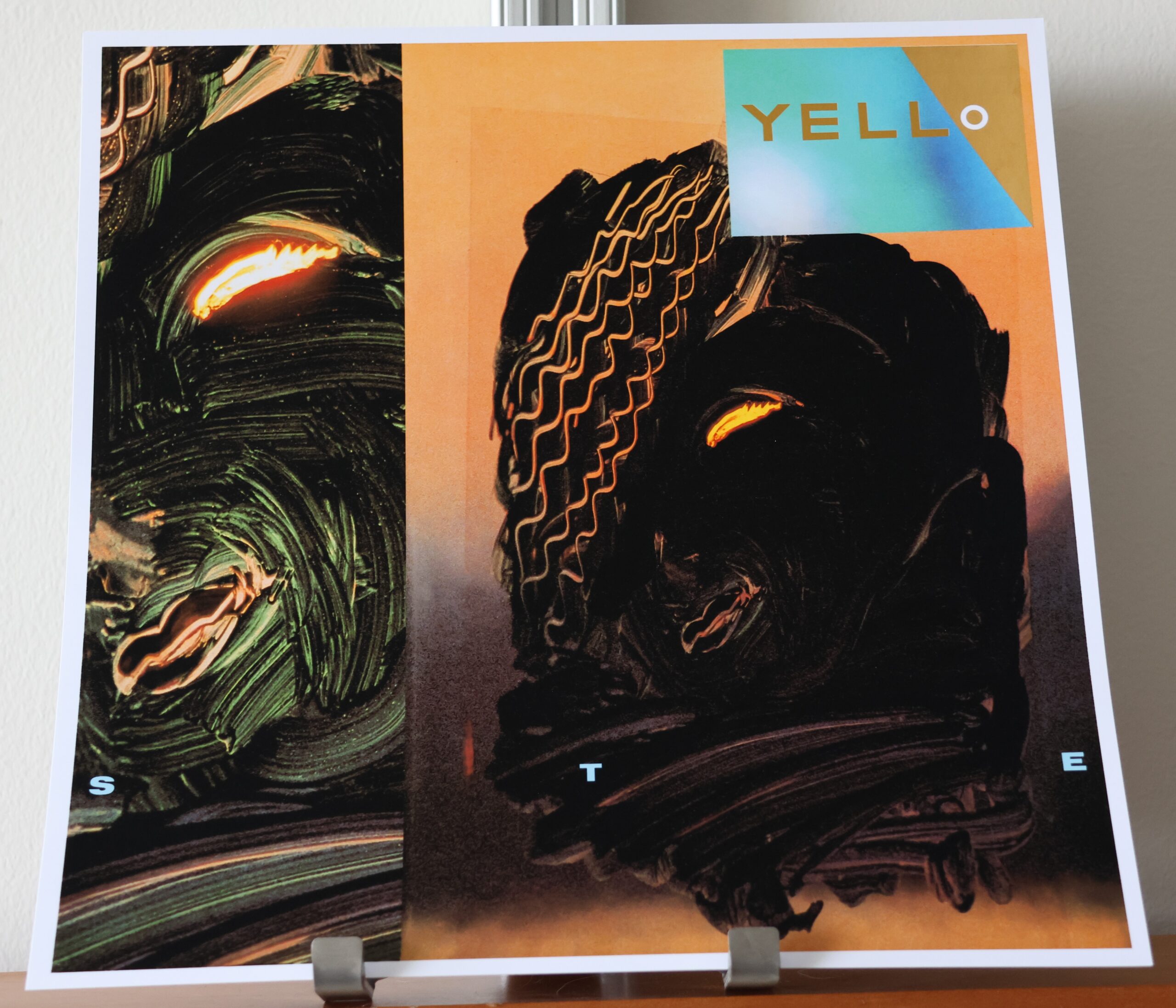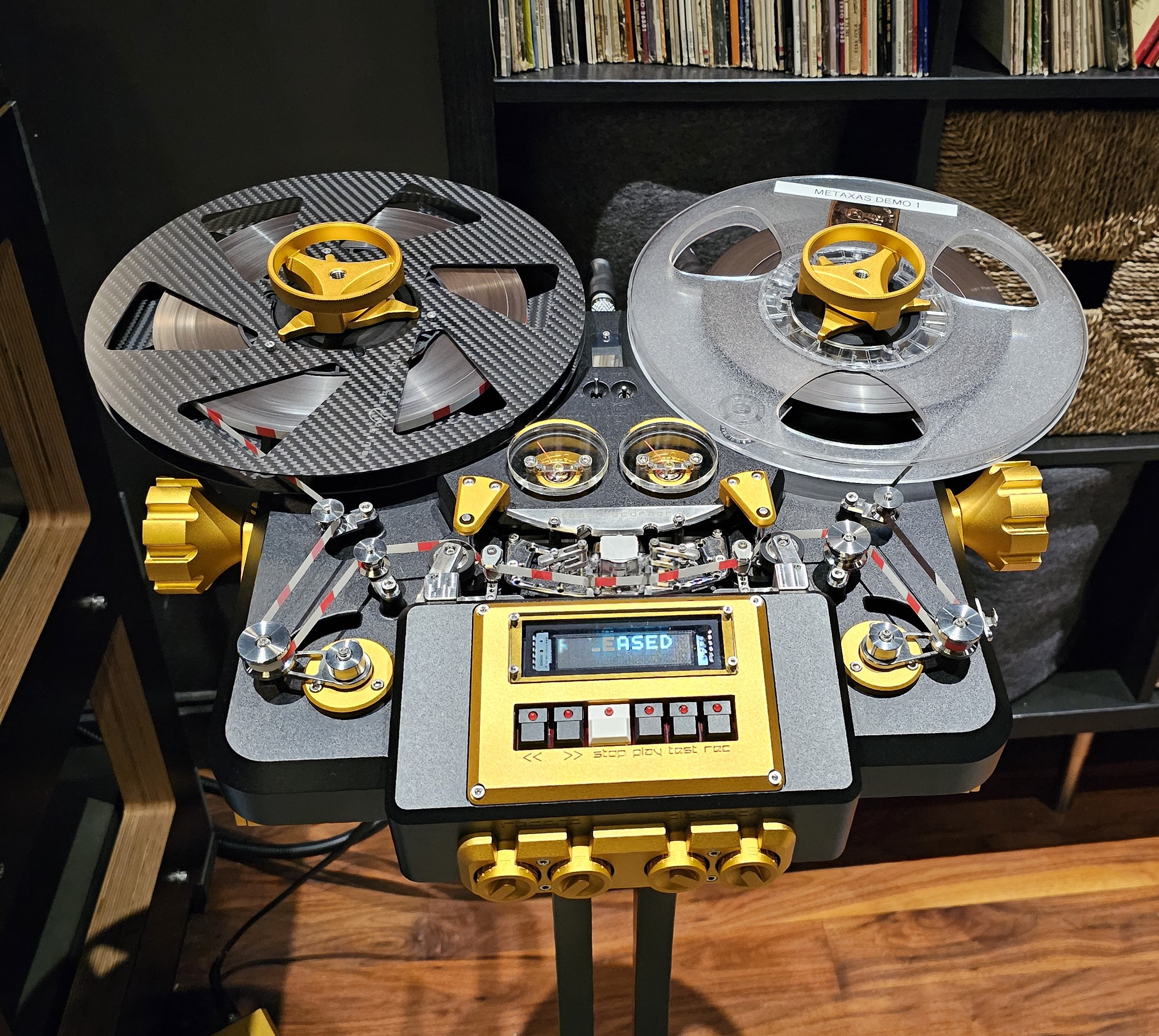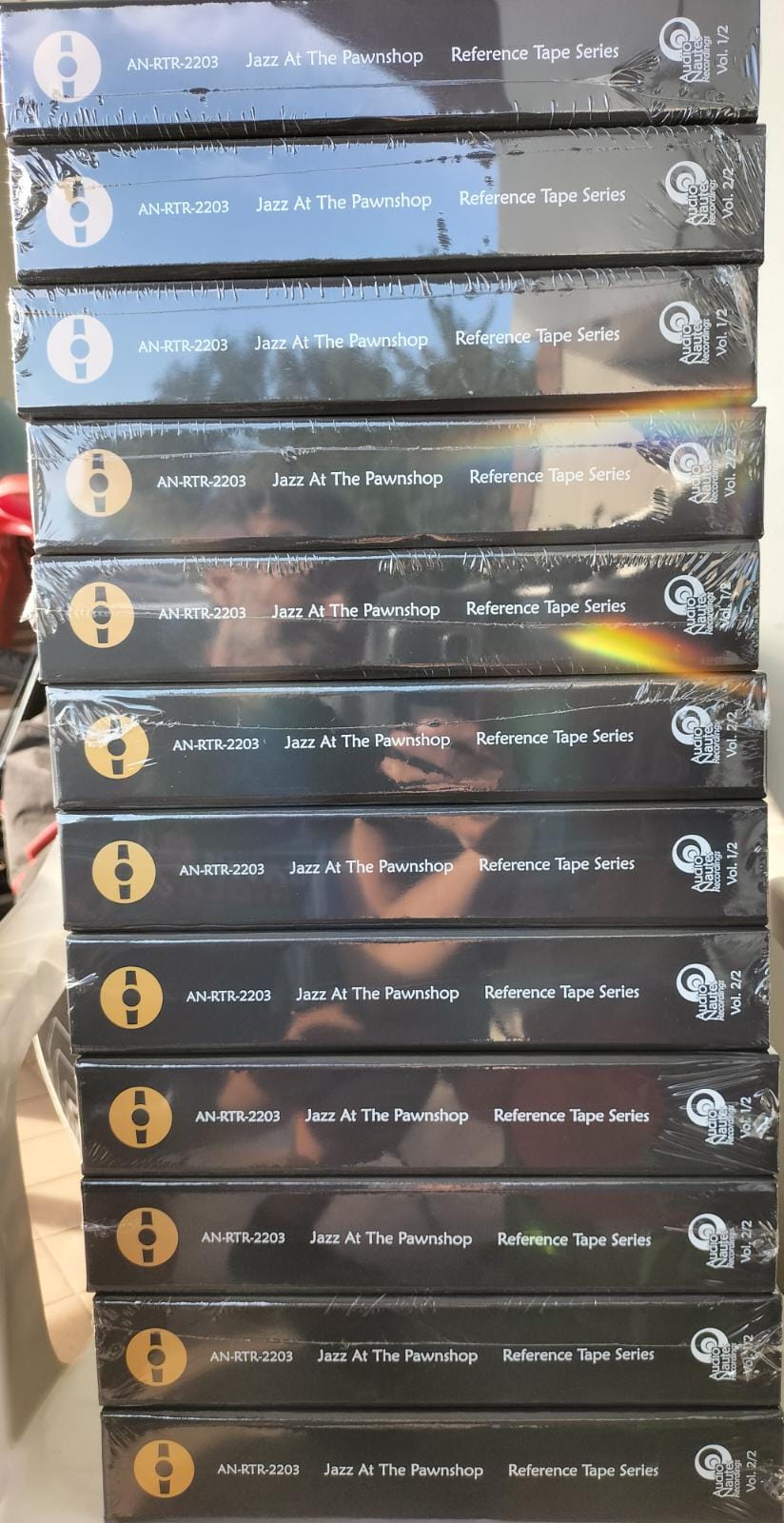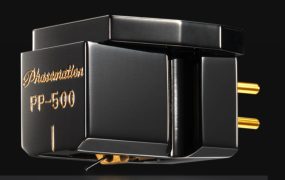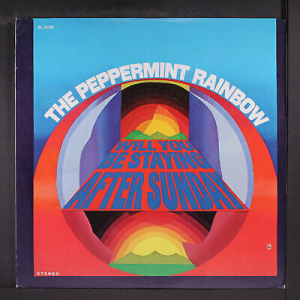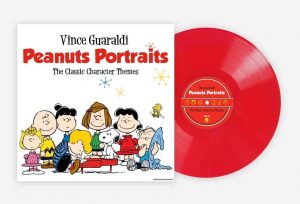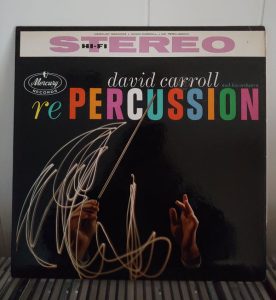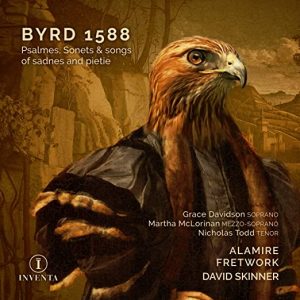
Cantate Domino. Torsten Nilsson (Conductor), Oscar's Motet Choir, Alf Linder (organ), Marianne Mellnas (soprano), Proprius 7762/AudioNautes Recordings AN-RTR-2107, 15-ips, 2-track reel-to-reel tape, IEC EQ, Price: €850 (until January); €990 (after January, 2023).
Proprius Records' conjure up many fond memories for old time audiophiles and for good reason! And thanks to Fabio Camorani, founder and owner of AudioNautes Recordings, these new Proprius reel-to-reel tape, LP and UHQCD reissues will hopefully bring the same joy to an entirely new generation of audiophiles.
Proprius Records' albums (the same held true for many European labels back then) weren't easily obtained in the US back in the late 70s and early 80s. My source for these—plus Opus 3 LPs—was the Swedish Music Service in Sweden. Proprius recordings were renowned among my audio buddies for recording engineer's Bertil Alving's organ recordings—allowing them to flex the woofers on their 80s Infinity RS1b speakers. Natural sound recorded in real spaces such as churches. Many outstanding recordings came out of Proprius Records such as the legendary live Jazz at the Pawnshop and the subject of this review, the choral recording Cantate Domino.
Over the years I had wondered why someone hadn't tapped into the Proprius catalog. (The Proprius catalog is currently owned by Naxos.) Especially considering the recent plethora of audiophile and musical reissues. Not to mention how much longer will these fifty plus year old tapes last? Well, it pays to be patient.

Then a couple of years ago, Fabio Camorani began reissuing specially selected Proprius titles cut from the original master tapes, done with tender loving care in pure, unadulterated analog (no digital steps in the process) to boot. Among the reissued LP titles were Laudate II, Antiphone Blues and Now the green blade riseth (my 2020 Positive-Feedback Recording of the Year and one original Proprius never purchased. Hell, I never ever saw it.) These titles were also issued in parallel in the UHQCD digital format.
Fabio and I also discussed then about the possibility of issuing a few Proprius titles on, gasp, 15-ips, 2-track, reel-to-reel tape. Some time elapsed and our tape conversations faded into a pleasant memory. Then out of the blue Fabio messaged me that AudioNautes Recordings and Naxos had reached a business agreement allowing him to reissue the Proprius catalog on reel-to-reel tape! Wow! Now the AudioNautes Recordings tapes aren't cheap (the licensing fees weren't cheap) but the tape medium is the only way to go if you want to truly hear these amazing Bert Alving recordings in all their glory. Positively heavenly in this case. Not to mention the tape serves as a benchmark for determining which of the many LP pressings is the best representation of the original master tapes.
Welcome AudioNautes Recordings!
Fabio Camorani is a man of many hats. By day he is an electrical engineer and by night entertains himself with Lean Manufacturing (in his spare time Fabio moonlights as a triathlete). Twenty years ago, Fabio founded his audio electronics company Audio Nemesis that specializes in building custom-made amplifiers, preamplifiers and DACs. His less expensive Audio Nemesis line—particularly the D/A convertor—drew favorable comparisons to much more expensive high-end audio components of the day.
Apparently, that wasn't enough because in 2008-09 Fabio founded AudioNautes Records. Audionautes Recordings' mission was focusing on reissuing long forgotten recordings. Fabio's first foray into the music business was the relatively unknown 1983 recording of Gheorghe Zamfir et Marcel Cellier Flute De Pan Et Orgue Live/Direct (Disques Cellier 015/AudioNautes Music Recordings AN-1001). Fabio actually flew to Switzerland to get the original tapes from Cellier for this reissue for the project. There's some amazing low end on this LP too.
Pan Flute and Organ was followed by Vivaldi's Sonatori de la Gioiosa Marca and then in 2015 by the more widely known 1980 Bis recording of Gregoria Paniagua and the Atrium Musicae De Madrid's La Spagna, Music From the XV, XVI and XVII Centuries (BIS/AN-1401 and a long-time resident of Harry Pearson's TAS Recommended Recordings List). Fabio again went back to the original master tapes for this repressing and meticulously made small fine tunings to get the final result. No digital transfer or editing, just pure analog here, too. "The tapes," Fabio shares, "were almost impossible to be used for cutting grooves. The content, with cymbals and drums at the same time, is terrible for a correct groove cut." He also emphasized that, "Not all audiophiles are aware that these tapes are not always in the best of condition; besides needing to be handled with kid's gloves, need a lot of work." Stan Ricker remastered both the Cellier and Zamfir and Paniagua discs and Fabio shared, "were extremely stressful. Stan cut 12 lacquers, broke three styli and maxed out the power of his custom-built Keith Johnson cutting amplifiers, until I was satisfied with the results." (Stan sadly passed away shortly after these masterings.)
Along the way AudioNautes Recordings also reissued a number of other specially selected titles sourced from the likes of Chesky Records and culminating in in the first Proprius release Antiphone Blues (2018), followed by Now the green blade riseth (2020) and Laudate II (2021).
Enter Reel-to-Reel Tape
That brings us to the subject of this review: the legendary Proprius choral/organ recording Cantate Domino.
Fabio set his sights even higher after the release of the LP and UHQCD releases of Cantate Domino. Ever the inveterate audiophile, Fabio set about, "making available an absolute reference version…one able to guarantee a never before heard level of quality and fidelity." There was one clear choice in his mind: "a 15-ips reel-to-reel copy of the original master tape!"
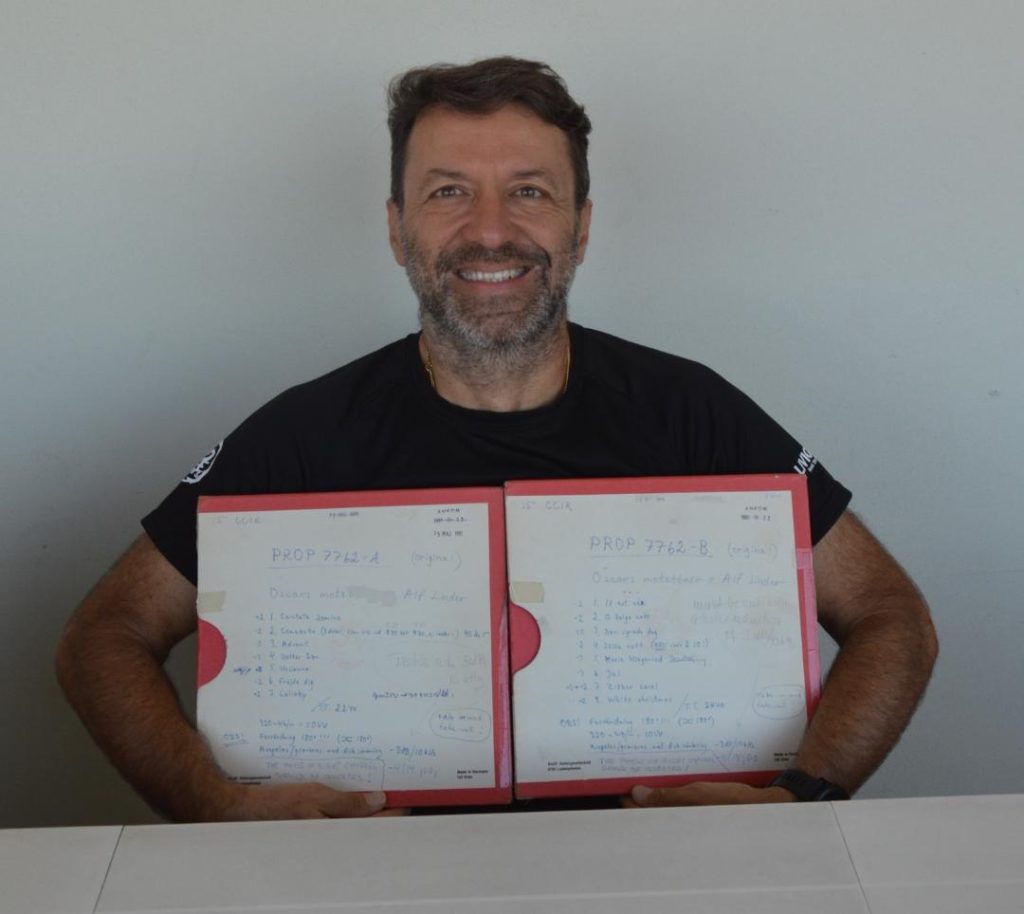
Why did it take so long for him to release recordings on reel-to-reel tape? Fabio answered, "I was waiting for right time. My initial inquires had been met with skepticism from some labels. Then things changed. In the case of Cantate Domino, Fabio had reissued several Proprius titles on LP/CD and Naxos was so impressed with the results that they offered him the rights to reissue any and all of the titles on reel-to-reel tape. Not to mention Fabio added, that, "one of the people at Naxos is an audiophile." Naxos initially just wanted in the beginning to sell a few copies but that all changed once they saw the demand for the Proprius recordings.
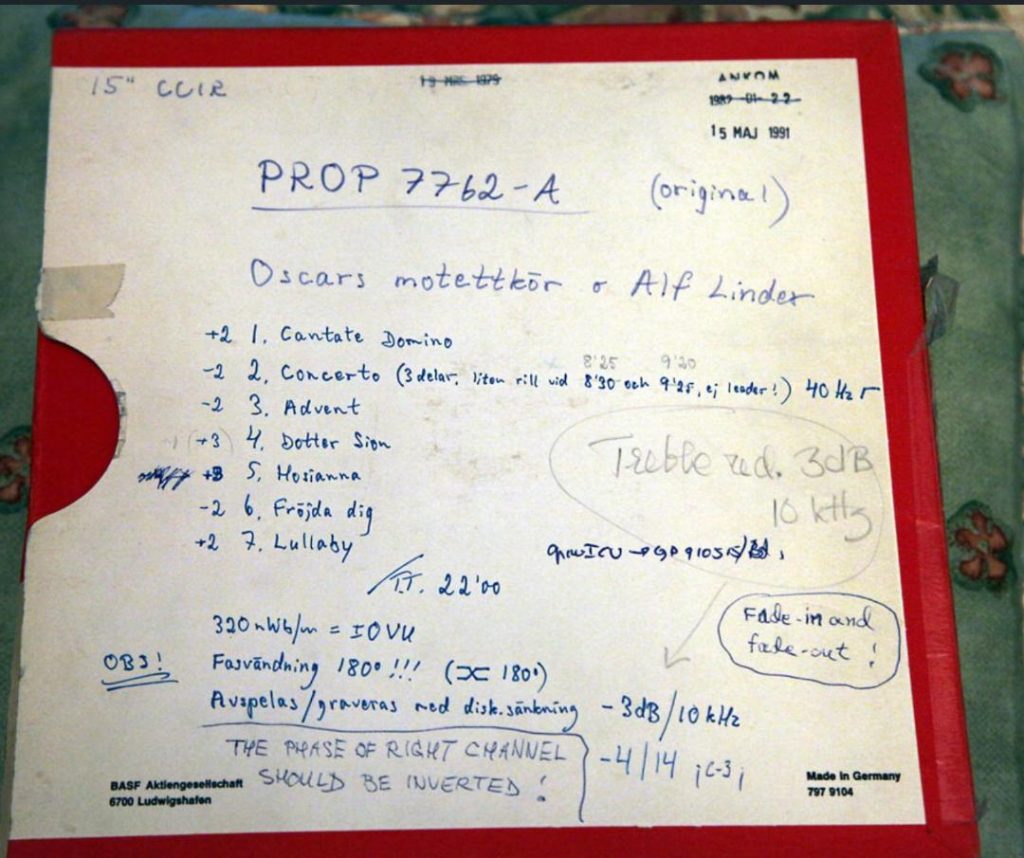
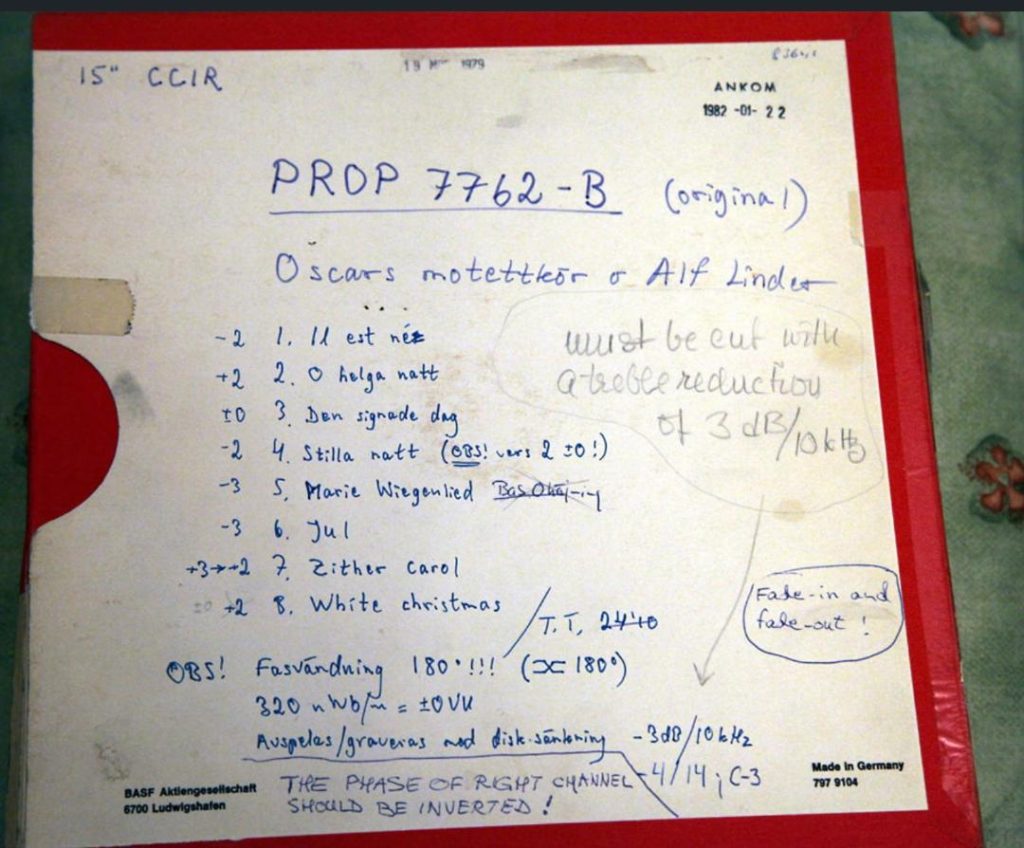
When all was said and done, Fabio and his team spent around 100 or so hours fine tuning the running master since each track required a different type of correction. That process consisted of according to Fabio of, "putting down on paper some initial listening notes, checking the original recording and mastering notes, listening at home and fine tuning the EQ/phase and then come back and listen again after a couple of days." Fabio recalls we, "didn't work in a rush; we compared, met and re-listened again and again getting impressions. Sometimes we would even go back to the beginning and find that the beginning was the best." The listening panel consisted of Fabio and a close-knit group of friends that included:
Pietro Benini, owner of one of the leading studios in Italy and the person responsible for the tape transfers;
Fabio Fornari, owner of a vineyard in Italy and according to Fabio, "has monitor type system that helped the team hear deep detail in recordings. He owns several high-quality Otari MTR-15 reel-to-reel tape decks; his collections also includes a Studer 820, 812 and 807 among a host of other machines;
Roberto Mengozzi, whose company does high level electronic assembly (included among his projects are communication systems for Formula 1 racing cars) and the person who pushed Fabio to dupe these Proprius tapes. His company also assembled Fabio's electronics and Fabio says, "owns a fantastic audio system." Roberto was working with Fabio on this project simply for the fun of it. And the owner of one of those relatively rare and highly desirable Otari MTR-15 reel-to-reel tape decks;
Stefanno Ercolani, another of Fabio's circle of friends who was also donating his time and assembled the included artwork.
Now to the process of tape duplication. Fabio shared, "I had the masters [tapes] but for obvious reasons each consumer copy can't be done directly from the master tape for a couple of reasons. First is they (AudioNautes Recordings) need to sooner or later return the master tapes back to the owners (and with these two top titles it's sooner than later.) Second, it also makes no sense to run the master tens and tens of time. Translation. Some of these tapes are 50+ years old and very fragile." Fabio adds, "99% of masters are far from being perfect and they need a lot of work. And the less they have been touched, the better. So we want (possibly) masters from the session tapes (like Cantate Domino!). So a 1:1 copy is not a great idea. Thus, we found the way and we prepared some identical tapes, becoming OUR master from the session tapes."
AudioNautes Recordings essentially uses the same tape duplication process established by other companies currently releasing real time, 15-ips reel-to-reel tape. They create a running master tape copy (s) to make production/consumer copies. Consumers receive a very high quality third generation copy; with care there is minimal generational loss. AudioNautes Recordings do differ from some other companies in a couple of aspects. First, AudioNautes Recordings duplicates one consumer copy at a time. That's in contrast to other tape labels that might dupe two to four tapes at a time. The advantage of the former is the added care and keeping that interconnect (specially designed in this case) between master and slave decks (in this case) to one meter; the advantage of the latter is the ability to make more dupes (and there is less wear and tear on the running master tape) from one running master. Of course, many companies create several running masters from the master tape to increase the number of consumer tape copies that can be made at one time. AudioNautes Recordings will stop making copies once the running masters have deteriorated. Fabio also shared that, "the duplication process takes approximately one hour."
Some other interesting facts about the recording and the tape transfer process. Cantate Domino—despite the warning on the master tape box "isn't out of phase," according to Fabio. The master tape is he shared, "built from the session tapes. The phase," he added, "apparently varies by session." Fabio also mentioned, "the two sessions are on two different tapes, the accompanying notes are very generic and not very precise in nature and the master tape is not biased in the usual way. The two tapes didn't even sound the same complicating the fine tuning process." That resulted in Fabio and his team taking a different approach to the remastering of Cantate Domino.
Cantate Domino—and other titles in this special project—will be released as UHQCDs, LPs or 15-ips, 2-track reel-to-reel tapes. The LP release will come in two versions. The first edition will be a specially numbered and limited-edition box set of 1234 pieces. The limited-edition box set will consist of 1 x 33 rpm and 2 x 45 rpm LPs. The LPs will be packaged in the same box designed for the tape release, only slightly reduced in size. Fabio added, "from all tests the LPs are really better than any 33-rpm version done in the last 45 years. The 45-rpms are," Fabio shared, "are another little step better." When the limited-edition box set is sold out, Cantate Domino will only be available as a standard, unnumbered, 33-rpm unboxed edition.
Finding a mastering engineer who would follow Fabio's instructions and be on the same page to cut the lacquers took a little searching. In the end, Fabio hooked up with Scott Hull, owner of Masterdisk in the US, to master the LP lacquers.
Finding a quality record pressing plant nowadays that isn't backlogged a year is no easy task either. In the end, Fabio chose Austrovinyl to press Cantate Domino. Austrovinyl is a small record manufacturing facility dedicated to pressing very high quality vinyl situated in a 300-year old house in Fehring, Austria. It was none other than Scott Hull who brought Austrovinyl (austrovinyl.at) to Fabio's attention and was tasked with pressing the LPs.
The Reel Deal

Everything about this reissue exudes Italian craftsmanship and attention to the minutest detail! Starting with the over-the-top packaging to the reel quality and customizing to the four-color multipage booklet to last but not least, the certification of authenticity. Though one can't change the singing in Swedish, everything in the included insert is now in English. AudioNautes Recordings also added new pictures from the original recording date, pictures of the master tape, information about the organ at the church with color pictures, notes from the original album, extra background on the organist, soloist and conductor, information on the (underappreciated) Otari MTR-15, playback and monitoring equipment. In short, as good a packaging as I've encountered from any company releasing music on reel-to-reel tape including Acoustic Sounds, The Tape Project, 2XHD Fusion and Horch House.

Cantate Domino is renowned for its realism: an immense, enveloping soundstage, huge dynamic range and incredible resolution and tonality. The good news? The 15-ips tape captures all those qualities and a healthy additional helping, too! Those who averred that Cantate Domino wasn't a reference recording are simply wrong. Cantate Domino features Torsten Nilsson conducting Oscar's Motet Choir with organist Alf Linder (Linder is also featured on other Proprius organ recordings) and soprano Marianne Mellnas. Cantate Domino was recorded in Stockholm's Oscarskyrkan Church. This album features predominantly choral recording (think the great Argo recordings) of Christmas music ranging from Swedish folk songs to Handel with the music sung in many different languages.
After a few listens to the tape, it was time to pull out some LP copies for comparison. Given the price of this tape (and tape in general), I wanted to be certain the AudioNautes Recordings release was truly better than the vinyl edition. Spoiler alert: it wasn't even close. The tape bested the LP by the proverbial country mile.

Keeping everything on equal footing for the LP vs 15-ips tape comparisons was of paramount importance. LPs were played back either with the Lyra Atlas SL Lambda cartridge mounted in a SAT LM-12 arm into the Doshi EVO phono stage or the van den Hul Colibri XGW Master Signature cartridge (1.1 mV output) mounted in a VPI 12-inch gimballed arm into the Goldmund PH3.8 phono stage. Both arms were mounted on a VPI Avenger Direct turntable. Tape was spun using a modded Technics RS-1506 reel-to-reel machine equipped with low impedance, Flux Magnetic heads run balanced out into a Doshi V3.0 tapestagei (Telefunken ECC801Ss in the phase splitter position and Mullard CV4024s in the IEC/NAB EQ positions).
So I dove into my record collection and came away with a couple of different versions of Cantate Domino for the tape vs LP comparison. These LPs included the original white cover album, a slightly later black cover release and finally the ATR reissue. Now I do have three other sealed versions around including a First Impressions music (FIM), Super Analogue and ½ speed mastered; I just couldn't bring myself to crack them open. The most surprising finding from this comparison? The original white jacket Cantate Domino release wasn't the closest sounding to the tape; that honor fell to the slightly later, black jacket release though this comes with a caveat. My original white cover release was misplaced in my move almost two years ago and is still MIA. Thus, I was forced to rely upon a used backup copy purchased from Princeton Record Exchange many years ago.
And the winner is by a knockout in the first round and still analog champion is tape. No. In this instance it wasn't even close between reel-to-reel tape and LP. The ATR LP reissue was the most detailed of the LPs but it was also a bit illuminated in the upper midrange. The original white jacket was murky and amorphous sounding next to the tape. As if the reflected sound was swamping out the direct sound. The black jacket sounded the closest to the tape giving a respectable representation of the tape's sense of transparency, imaging and space but just not the depth of resolution or unfettered dynamics. In fact, the dynamic strain on peaks was painfully apparent on all three LPs next to the tape.
Some short snippets from my listening notes:
The tape gives a much, much greater sense of the choir and ambience of the church. The choir sounds like it's floating in air. This is typified by track 5 and the length of trumpet's decay heralding the opening of the piece vs the LP.
The organ and low end is much cleaner, meatier and deeper on the tape
Soloist Marianne Mellinas is located closer to the listener on the stage vs the LP. Not unlike a live concert. There's a clear separation of her direct vocals and the decay that sounds like goes on forever vs the LPs.
Track 2 organ not going to floor you with authority but rather it's finesse and resolution.
All in all, the tape is a total winner.
Future AudioNautes Music Tape Reviews
Stay tuned for the review of the legendary Proprius recording Jazz at the Pawnshop,. The next pair of tape releases currently being shipped are none other than one of Fabio's Proprius favorite titles Antiphone Blues (this master, too, needed a lot of work) and the aforementioned Bis La Spagna. Looking further down the road is a tape version of that Proprius knockout The Green Blade Riseth. According to Fabio the potential of this tape is off the charts but this master, too, needs a lot of work.
Fabio also has his sights set on some non-Proprius recordings including titles from the Swedish Music Society, Pierre Verany and Supraphon. These tapes date from from 1960s to late 1980s and there's no telling how much work they will need before being reissued.
So there's only one choice if you're on a quest for the Holy Grail of Cantate Domino releases: the 15-ips, 2-track, AudioNautes Recording's reel-to-reel tape. In addition, if you're on a quest for the finest sounding 15-ips reel-to-reel tapes, then the AudioNautes Recordings' Cantate Domino reissue belongs at the top of your tape wish list!
Technical Specifications (additional information provided by Bertil Alving)
Original recording
- Recording Date: January 23-25, 1976 plus three additional songs April 25, 1976
- Recording Venue: Oscarskyrkan (Oscar Church), Stockholm, Sweden
- Producer: Jacob Boethius
- Recording Engineer and tape editor: Bertil Alving
- Equipment: Modified Revox A77, no Dolby
- Microphones: 2-Pearl TC4 microphones in A-B configuration, semi-omnidirectional pattern
- Microphone preamplifier: custom-built
- Tape: BASF LGR-30P (January)/AGFA PEM 468 (April)
- Speed/EQ: 15 ips/CCIR
- Reference Level: 320 nW/m
- Track Layout: ¼-inch
For this reissue
- Mastering engineers: Pietro Benini, Fabio Fornari and Fabio Camorani
- Playback machine: Otari MTR15
- Recording machine: Otari MTR15
- Reissue tape brand: ATR Master tape





